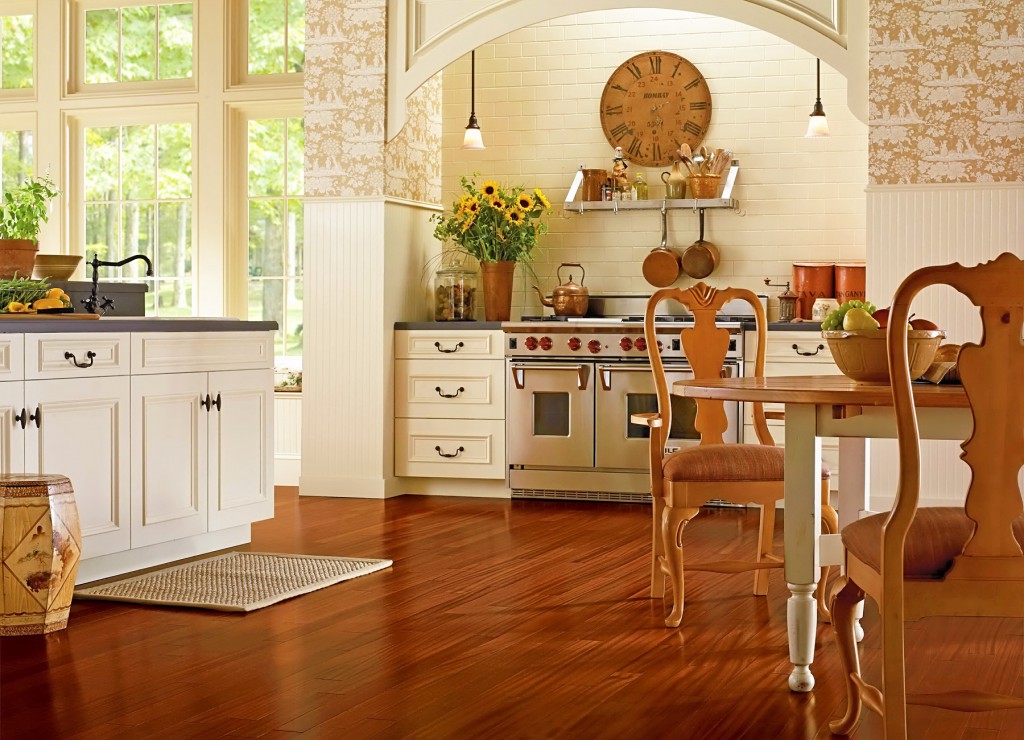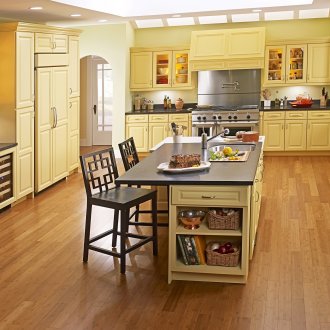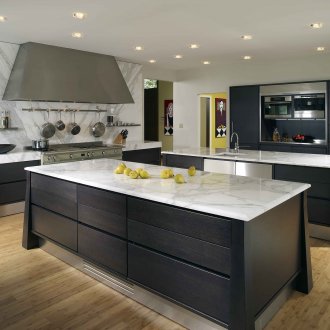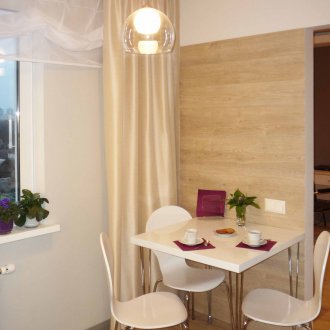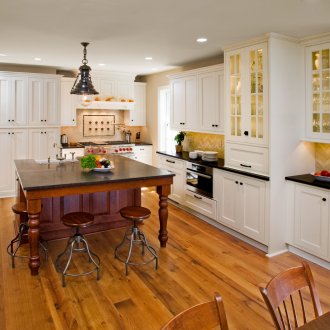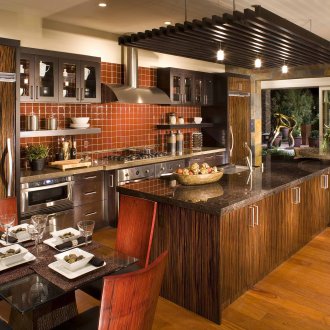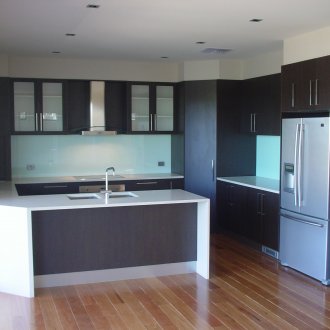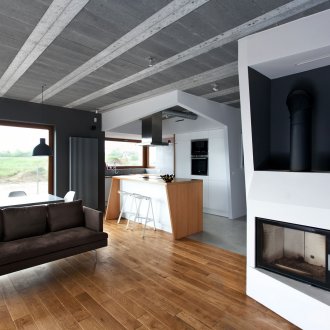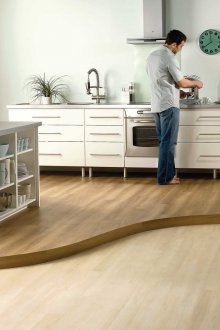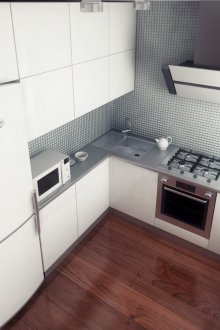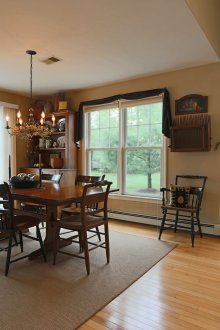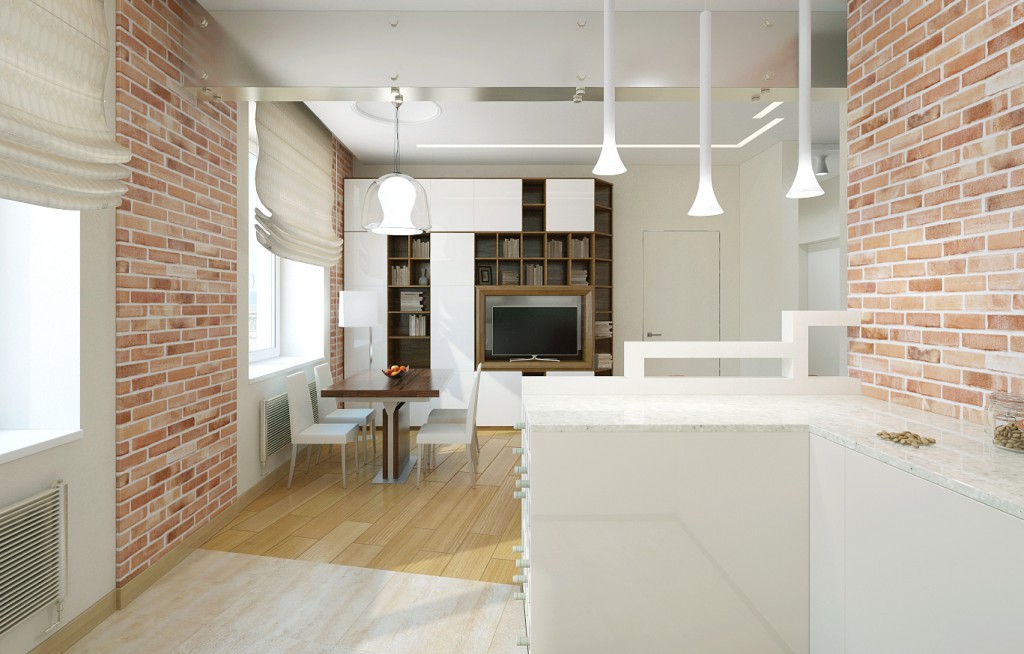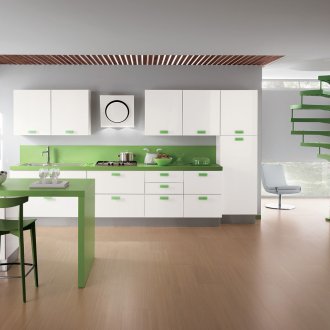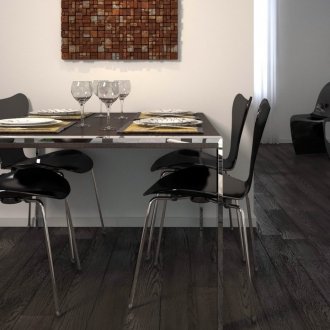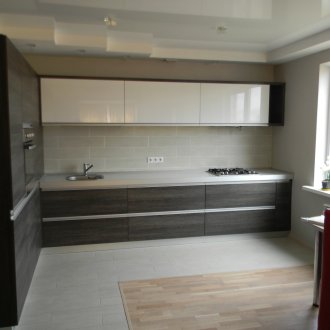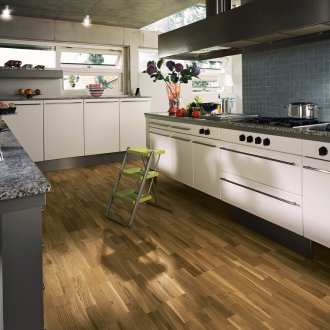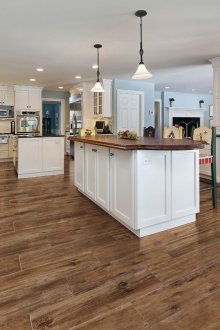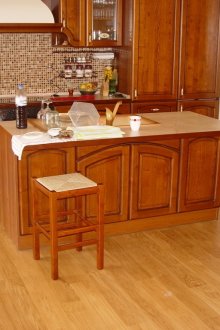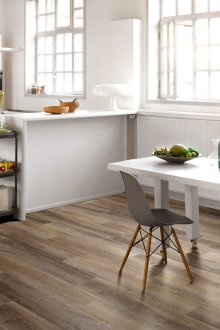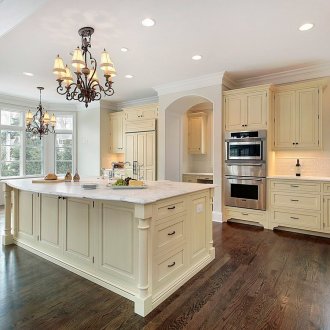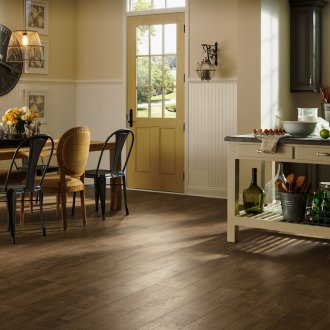How to choose a laminate for a kitchen interior (22 photos): modern combinations
Content
Laminate flooring is often called an inexpensive alternative to solid and parquet boards and “laminated flooring”. Initially, this coating was conceived by manufacturers precisely for this purpose, however, a modern laminate can reliably copy many materials, including tiles. Thanks to this material, you can transform the interior, create a unique and beautiful design, but can it be put in the kitchen? Many people prefer to lay tile than laminate, as, in their opinion, it can swell, scratch and deteriorate.
Indeed, the floors in the kitchen are subject to high loads and all kinds of damage: it is often stained, scratched, spilled water, oil on it, which negatively affects products made of wood shavings and wood. But a modern durable laminate is quite capable of withstanding the above tests. The main thing is to correctly combine the type of floor covering, the class of wear resistance and water resistance, a non-marking and beautiful design, and also to put it in high quality. So how to choose a laminate for the kitchen?
Key coating features
Laminate is a coating that consists of an average density of wood-fiber board, as well as paper with melamine resins, the last drawing is applied. This coating has several advantages:
- the laminate perfectly copies expensive materials, including tiles and stone;
- such floors provide a pleasant walk barefoot;
- the coating resembles natural wood;
- affordable price;
- ease of laying;
- resistance to abrasion, as well as temperature extremes;
- there are types of laminate, which make it possible to combine the "heated floor" system in the kitchen;
- many decor options and a respectable appearance.
Laminate finish is almost the most affordable. At the same time, it is quite possible to lay high-quality laminated floors in the kitchen, because they are easy to clean, not afraid of bumps, stains, scratches or cracks. Nevertheless, if in the living room and bedroom you can safely lay different types of laminate, then in the specific conditions of the kitchen it is better to choose its types.
Some types of laminate flooring really should not be put in the kitchen, because they do not withstand either temperature fluctuations, high humidity, or spilled liquids like beet juice or wine. Moreover, from the fall of sharp and heavy objects, such an unsuitable coating may be deformed.
Coating selection by strength class
It is important to focus on the strength class of the laminate, so that the floors in the kitchen better resist various bumps, scratches and falling objects. This class is indicated by two digits. For everyday life, the coating class is 21, 22 and 23. In the kitchen, it is best to lay a laminate of class 23. It is inexpensive, but it will not last long, because it consists of only three layers.
However, in the kitchen it is better to use a commercial type coating. The more durable types of commercial classes are 31, 32, 33. However, the 31st wear resistance class is better for the living room and bedroom floors, and it is recommended to put 32, 33, 34+ classes for the kitchen. This class of coatings can last in the kitchen for about 25 years.
Commercial coating includes five layers:
- high density wood board;
- moisture resistant film at the base;
- decorative layer made of durable paper;
- acrylic resins to protect the decor;
- moisture resistant top layer.
Waterproof or moisture resistant coating?
Modern high-quality laminated panels with a PVC base are almost not afraid of water, because on them, as a protective layer, water-repellent compounds based on wax are applied. However, not all manufacturers process joints between panels, and therefore these parts of the coating are susceptible to moisture.
- Moisture-resistant laminate does not respond to high humidity in the kitchen, however, such floors can be deformed if water gets into the joints. Moisture-resistant laminate can withstand drops, splashes, and sometimes even puddles. However, the moisture resistant laminate should be exposed to the liquid for no more than 20 minutes. If there is high humidity in the kitchen, then it is advisable to waterproof the laminate to seal the seams.
- Waterproof PVC coating is more expensive. However, a PVC layer can withstand moisture for six hours. Water-resistant PVC floors have factory joints, so additional protection measures can be avoided here. Laminate with PVC base is considered the most reliable, but waterproof PVC coating will be the most expensive.
When buying a laminate with a PVC base, you need to consider that there is no absolutely waterproof laminate. Moisture resistant laminate with PVC base is made of wood. Wood fiber floors will still absorb water. In addition, with a damaged PVC protective film, the wood of the floor will absorb moisture.
Laminate in kitchen interior design
One of the main reasons for the popularity of laminate flooring is that you can create any design. You can lay a coating of any color, including imitation under a white stone. Therefore, the interior of the kitchen can be done in any style. Finishing and design of the premises are often performed in a complex, as a result of which a laminate of a certain color should be selected for a specific kitchen interior.
- Country - style design dominated by tinted, roughly processed wood combined with forged elements. Laminate can be used here mainly dark color, which follows the structure of the plank floor.
- Swiss Chalet is a style design that combines wood and natural stone. You can combine stone and laminate in dark color. The interior can also be combined with a laminate of the color "walnut" or "ash", as well as a dark stone.
- Minimalism - style design involves restraint. Finishing here involves stone and laminate, which has a light, white, black or gray color.
- High tech. Style design involves gray, black, occasionally white laminate or stone. Most often, stone and laminate of the color “wenge” are used.
- Provence. The interior of the kitchen involves mainly light, pastel colors with small bright splashes. For the floor, a light laminate with an inexpressive and shabby texture is better. For example, you can choose the colors of light "bleached oak."
White or light laminate can be laid for zoning the kitchen. For example, various functional zones can be distinguished by laying panels that differ in texture, shades, or colors. You can not only use a laminate of different colors, but also use a stone. Finishing can be different, because modern technology allows you to create not only a white, light or dark laminate, but also with a very unexpected texture, for example, imitating the skin of a crocodile or stingray. An interior with such a floor will look elegant and glamorous.
Recommendations for choosing a laminate
-
- The interior of the kitchen often involves the use of a "warm floor" system. If you decide to use this system, then you need to lay a laminate, which is specifically designed for this.
- Pay attention to one professional moment. A larger room suggests that the floor should be more beautiful and more expensive.For example, in a large kitchen, lay a laminate under a tile. With a small room, the color accent is performed on the walls, a neutral shade of the floor is selected in the kitchen interior. It should be remembered that the flooring can expand or narrow the interior of the room. Therefore, you need to lay a laminate that will meet the necessary requirements.
- In order to choose the best laminate for the kitchen and find out how safe the purchased material is, you should carefully study the appropriate labeling. If the laminate packaging is marked E-1, then this indicates that the laminate has the least formaldehyde.
- An important role in the selection will play the type of connection. The optimal solution would be a laminate, which has a tight locking connection. Since the kitchen is not ruled out a drop of breaking and heavy objects, the probability of damage to the panels is quite high. The lock type will make it easy to replace the panel with a new one. You can also dismantle the coating if necessary.
- If we consider the appearance, then for the kitchen it is recommended to choose a coating that mimics the tiles. This option is often treated with antistatic agents, as a result, the coating does not attract dust.
- Larger panel sizes provide fewer joints, which is great for cost.
